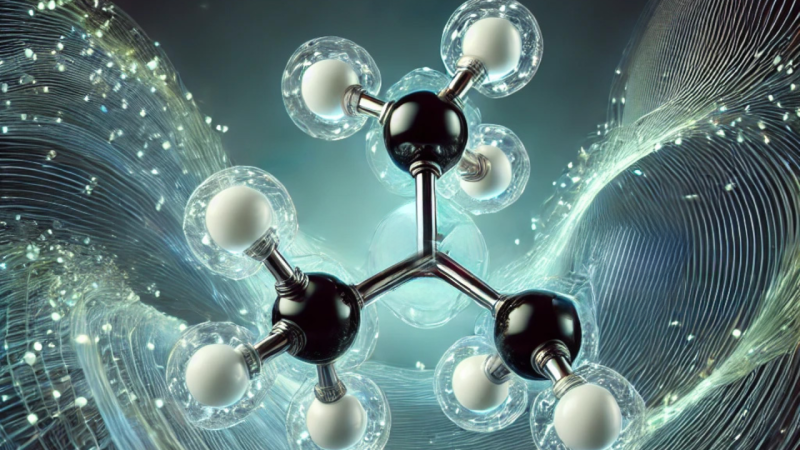Climate Control in Healthcare: Key Factors to Consider
The healthcare sector presents a unique set of challenges and requirements when it comes to HVAC (heating, ventilation, and air conditioning) solutions. Whether specifying new systems or upgrading existing infrastructure, consultants must ensure that their selected equipment aligns with strict performance, reliability, and regulatory demands. Here, we explore the key considerations when selecting chillers and heat pumps for healthcare facilities and how Cooltherm’s expertise supports seamless project delivery.
Energy Efficiency and Sustainability
Since healthcare facilities operate 24/7, energy efficiency is a crucial factor in managing operational costs and reducing overall emissions. The need for constant climate control across diverse environments means these buildings have energy-intensive demands. Surgical theatres, patient recovery wards, and waiting areas all require different temperatures suitable for the occupants. Inefficient HVAC systems will result in higher energy costs – inadvertently leading to increased environmental impact.
Sustainability in healthcare is a key component of meeting the UK’s carbon reduction targets, both on a national level and net zero targets published specifically by the NHS. By incorporating chillers and heat pumps that use low-GWP refrigerants like R513A or R290, healthcare facilities will see their facilities lower their carbon footprint.
Where appropriate, simultaneous heating and cooling can be established by deploying equipment with 4-pipe systems; the benefit being a reduction in energy waste and flexibility to adapt to varying climate control needs across different zones within a facility or campus.
Improved energy efficiency will free up financial resources – resources that can be reallocated to patient care and facility upgrades. Achieving long-term sustainability often goes hand-in-glove with compliance to environmental standards, such as BREEAM certifications and CIBSE guidance, which are crucial for modern healthcare.
Resilience and Redundancy
The importance of resilient temperature control equipment in hospitals and healthcare facilities cannot be overstated. Critical spaces, such as operating theatres, MRI suites, pathology labs, and patient ICUs, require consistent temperature and humidity control to ensure equipment longevity and maintain optimal working conditions. Sensitive medical devices generate a significant amount of heat and can experience malfunctions should environmental conditions deviate.
To avoid unforeseen disruption, redundancy is a fundamental design principle in healthcare HVAC systems. This can involve deploying modular chillers, multi-compressor units, or secondary heat pumps as a backup that will keep the system operational during maintenance or unexpected issues.
As well as improving efficiency, 4-pipe systems also provide further resilience by reducing the need for separate systems – minimising potential failure points.
Healthcare facilities depend on systems capable of rapid ramp-up or load-sharing capabilities to adjust to sudden changes. An added layer of resilience will come from integration into a BMS (Building Management Systems) to detect faults early and enable proactive maintenance.
Regulatory Compliance
Healthcare HVAC systems must comply with strict regulations to ensure safety, efficiency, and environmental responsibility. Key guidelines include the Health Technical Memoranda (HTM), such as HTM 03-01, which governs heating and ventilation in healthcare buildings to ensure proper air quality, temperature control, and humidity levels. Non-compliance can lead to project delays, additional costs, and potential penalties. Typically, the healthcare facility as the building operator is responsible for addressing these penalties; however, consultants also play a key role in ensuring the design and installation meet the required standards, thereby mitigating the risk of regulatory breaches.
Additional regulations include Building Regulations Part L, which focuses on energy efficiency, and the F-Gas Regulation, which mandates the management and monitoring of refrigerants with high global warming potential. Installations must also adhere to CIBSE (Chartered Institution of Building Services Engineers) codes for system performance and safety, and any NHS Trust-specific requirements.
By partnering with experienced providers like Cooltherm, consultants gain access to expert guidance in navigating these regulatory frameworks, ensuring systems are designed and installed to meet all relevant standards from concept to commissioning.
Noise and Vibration Control
Excessive noise or vibration from chillers and heat pumps can disrupt the environment in healthcare facilities, affecting both patients and staff. Noise disturbances can increase stress levels and disrupt sleep, hindering patient recovery. While consistent noise and vibrations can also affect the performance of sensitive medical equipment. For example, MRI suites and diagnostic imaging rooms require exceptionally quiet environments to create accurate readings.
To address these challenges, selecting equipment with low-noise technology is essential. Turbocor compressors are an excellent solution due to their oil-free, magnetic bearing design, minimising operational noise and vibration compared to traditional compressors. In addition to improving the acoustic profile, this technology is known to require less maintenance, contributing to long-term reliability.
Although equipment with low noise and vibration levels are preferable, be sure to consider further noise control measures, such as soundproofing panels, anti-vibration mounts, and strategic equipment placement, to lessen disruption throughout the facility.
Space Constraints and Installation Flexibility
Space constraints are a common challenge in healthcare facilities, particularly older buildings with limited room for large mechanical systems. These constraints can make it difficult to install or upgrade chillers and heat pumps without significant modifications to the existing infrastructure. In areas such as basements, plant rooms, or tight mechanical floors, fitting new equipment often requires innovative approaches to avoid costly disruptions.
One effective solution is the use of compact, modular chillers and heat pumps that can be assembled on-site, allowing for easier transportation and installation in restricted spaces. Modular designs also provide flexibility for future expansions and can help manage installation timelines by enabling phased implementations.
Additionally, regulatory requirements can influence installation locations. For example, R290 (propane) chillers, known for their high efficiency and low environmental impact, must be installed on the roof or in designated outdoor spaces to comply with EN 378 safety regulations.
Cooltherm’s comprehensive range of chillers and heat pumps addresses the critical requirements of healthcare projects. Our solutions offer exceptional efficiency, reliability, and compliance. With capacities exceeding 1MW in both cooling and heating, our systems are engineered to deliver both performance and longevity.
We work closely with consultants to tailor each system to the project’s specific needs, ensuring seamless integration and optimal outcomes. From assisting with design considerations to ensuring compliance with regulatory standards, Cooltherm is your trusted partner for healthcare.
Selecting the right chiller or heat pump for a healthcare facility requires careful consideration of each factor outline above. By partnering with Cooltherm, consultants can be confident that these challenges are met with innovative, tailored solutions that support the highest standards of care and sustainability. To see what we can do, read our case study with the Royal Alexandra Hospital in Brighton.
Speak to our expert team for greater climate control support in your next healthcare project.
Related News

Decarbonising Heating in Historic Education Buildings with Heat Pumps

What is R290 (Propane)?
